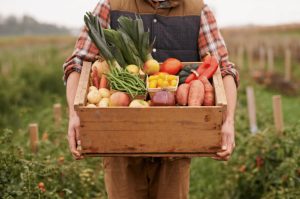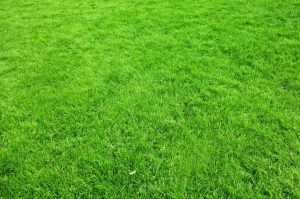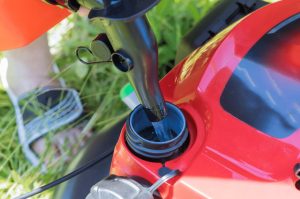Tasmania, located south of the Australian continent, has a distinct climate that distinguishes it from the rest of the country. This island state offers unique growing conditions that can be leveraged for effective gardening, from moderate summers to harsh, wet winters. Tasmania’s marine climate is milder than the mainland, resulting in a longer growing season for some crops.
Being in sync with your local climate is essential for gardening success in Tasmania, as in any other region. It is not enough to plant seeds and hope for the best. It all comes down to understanding what and when to plant it. So, let’s look at what you can plant right now in Tasmania.
An overview of Tasmania’s growing seasons
Tasmania’s four seasons each have unique features that influence what and when you can grow.
- Spring (September – November) is a time for renewal and expansion. As the weather begins to warm and the days lengthen, a wide range of vegetables and fruits thrive.
- Summer (December – February) is milder than in much of mainland Australia, allowing for a longer growing season for various crops. Gardeners should be careful of heat waves, which may necessitate extra watering and plant care.
- Autumn (March-May) provides cooler weather and more rain. This season is ideal for establishing winter crops and harvesting numerous summer-planted crops.
- Winter (June – August) is relatively cold and rainy. While low temperatures limit the growth of many plants, some winter crops flourish in these conditions.
It is crucial to note that the climate of Tasmania differs around the state. The west is wetter and cooler than the East, affecting what and when you can plant.
When designing your garden, keep your geographical conditions in mind. The distinctive Tasmanian climate presents both obstacles and opportunities. With the proper knowledge and preparation, you may have a productive garden all year.

What veggies to plant now in Tasmania
What to plant in Spring (September – November)
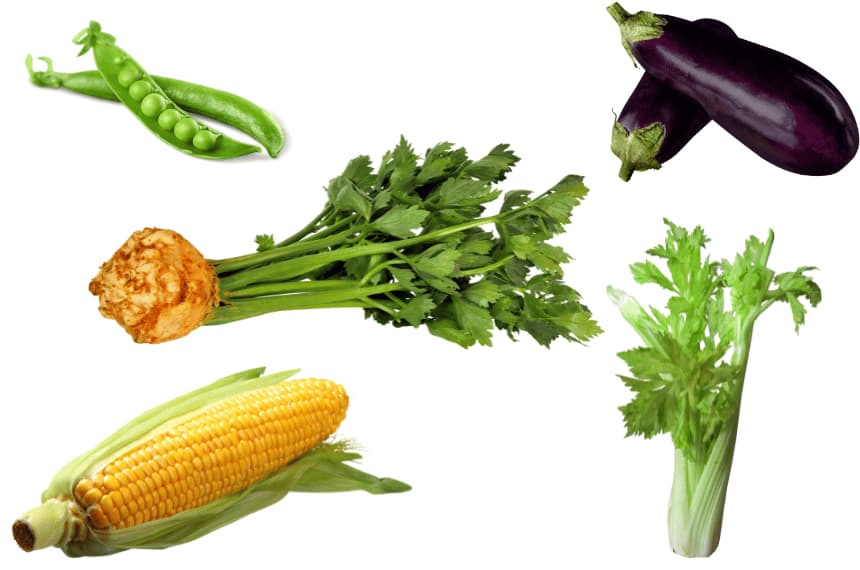
Spring is a time of regeneration and growth in Tasmania. Temperatures are rising, days are getting longer, and the soil is warming up, creating ideal circumstances for many plants to thrive.
Some of our favourite things to plant in Tasmania for Spring include:
Celery
Celery is an excellent spring vegetable in Tasmania since it thrives in lower temperatures and matures for a long time.
September is an excellent month to begin planting, allowing your celery to get a jump start on the growing season. Because this plant adores sunbathing, choose a sunny spot with well-drained, pH-neutral soil rich in organic matter.
Watering regularly is necessary to avoid bitter-tasting stalks, and a layer of mulch around the plants helps keep soil moisture. With appropriate care, you should be able to harvest your celery by February.
Celeriac
Celeriac, like celery and mild spring weather, makes September an ideal time to plant. This vegetable prefers full, light and well-drained, organic-rich soil.
Regularly water and support growth with compost or a balanced organic fertiliser. Keep an eye on your celeriac; harvest when the root bulbs reach around 10 cm in diameter, usually around February.
Corn
Corn grows best in warmer weather, so planting in Tasmanian spring, particularly in November, provides the optimum conditions.
Make sure you plant your corn in a sunny spot with well-drained soil. Work in old manure or compost before planting to assist its high nitrogen needs. By February, your corn should be ready for harvest.
Eggplant
Eggplant loves heat; therefore, planting in the spring is vital for a great yield. We recommend planting undercover in November to give this veggie enough time to mature over the Summer.
Ensure your eggplant gets enough sunlight and grows in healthy, well-drained soil with a pH of around 6.5.
Consistent watering is essential, especially during fruit growth. If all goes well, you can harvest your eggplant around February or March.
Peas
Because peas prefer milder weather, planting in the spring, especially in September, assures a decent crop before the summer heat. Choose a place with full sun to partial shade and well-drained, nutrient-rich soil.
Peas dislike too wet circumstances, so keep the soil moist but not waterlogged. You should be able to enjoy your pea harvest around December or January if you take care of it.
Companion plants to consider for Spring
Companion planting is a strategic approach that enhances garden health and productivity, which is particularly beneficial in Tasmania’s spring. This practice supports plant growth by improving pollination, deterring pests, and optimising space.
- Marigolds: Repel pests from nearby vegetables with their strong scent.
- Nasturtiums: Attract beneficial insects and can deter aphids from vegetables.
- Chives: Improve the taste of tomatoes and deter aphids.
- Basil: Enhances the growth and flavour of tomatoes and repels flies and mosquitoes.
- Carrots: When planted near tomatoes, they can improve their health and productivity.
- Beans: Fix nitrogen in the soil, benefiting neighbouring corn by improving growth.
- Peas: Like beans, fix nitrogen in the soil, which supports corn and tomatoes.
- Spinach: Grows well near celery, providing ground cover to maintain soil moisture.
- Lettuce: Complements most spring vegetables as a living mulch, keeping the soil cool and moist.
- Garlic: Deters pests from roses and raspberries and can benefit peas and celery by repelling aphids.
Incorporating these companion plants into your Tasmanian spring garden can lead to a more vibrant, productive, and healthy garden ecosystem.
What to plant in Summer (December – February)
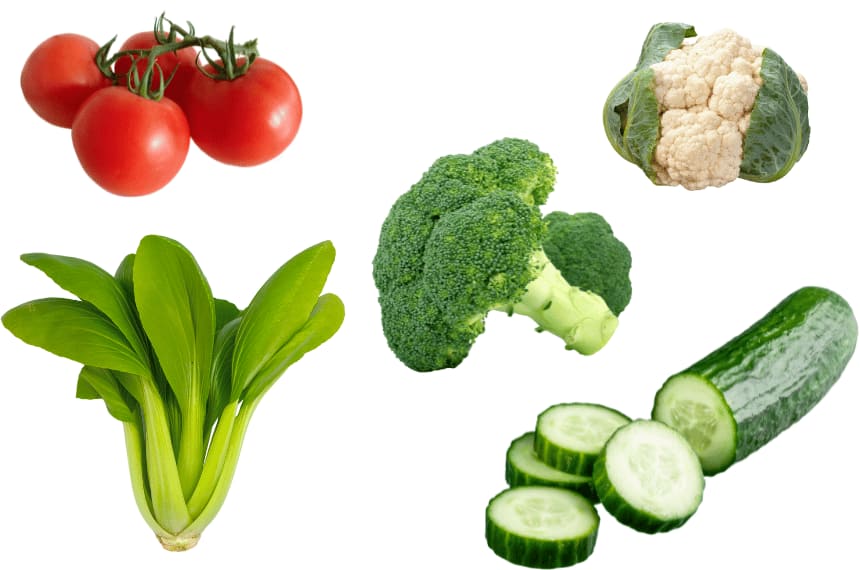
Summer in Tasmania, which lasts from December to February, is distinguished by mild temperatures, long sunny days, and lower rainfall than other seasons.
With average temperatures ranging from 12 to 21°C, it’s a good season to cultivate a range of vegetables, using the abundant sunshine and the natural fertility of Tasmanian soil.
Some plants to consider planting during the Tasmanian Summertime include:
Asian greens
Due to their fast maturation rate and resilience to a wide range of temperatures, Asian greens such as bok choy or pak choi are perfect for summer planting, particularly in December.
They grow best in full sun or partial shade on well-drained soil treated with organic compost. Watering regularly and weekly dosing with liquid fertiliser will promote foliage development. Harvesting may usually begin 4-6 weeks after planting, so you can expect a healthy crop in January or February.
Broccoli
Although broccoli is generally a cool-season crop, it can be planted in the Summer, particularly in February, for an autumn harvest in Tasmania’s temperate environment. Broccoli requires full sun and healthy, well-drained soil that is somewhat acidic.
Watering regularly and feeding with high-nitrogen fertiliser are essential. Broccoli heads should be ready for harvest by late April or early May.
Cauliflowers
Cauliflowers, like broccoli, can be planted in February for an autumn crop. A site with full sun and organic matter-rich soil is best for their growth. Watering constantly is another essential factor for the development of the cauliflower head. Providing balanced nourishment to the cauliflower plant will ensure a strong crop suitable for harvest in May or June.
Cucumbers
Cucumbers thrive in the summer heat and should be planted in a sunny, well-drained site in December. They are heavy feeders, so amend the soil with compost or well-rotted manure before planting.
We also recommend regular watering to avoid bitter-tasting fruit. Cucumbers should be ready to pick in February or March if properly cared for.
Tomatoes
Tomatoes are a popular summer produce that should be planted in December for a bumper crop. They demand a sunny location with well-drained, nutritious soil and regular irrigation.
Lower leaf pruning and tomato cages or poles can assist in promoting ventilation and reducing disease risk. If everything goes as planned, you can enjoy ripe, luscious tomatoes from February to April.
Companion plants to consider for Summer
Companion planting in summer leverages plant relationships to boost growth, deter pests, and enhance flavour. This practice is especially beneficial in Tasmania’s mild summer climate, ensuring plants receive mutual benefits during their growth cycle.
- Marigolds: Planted among tomatoes, marigolds deter nematodes and other pests with their strong scent, promoting healthier tomato plants.
- Basil: Companion to tomatoes, basil repels flies and mosquitoes and is believed to improve tomato flavour.
- Nasturtiums: When planted near cucumbers, these colourful flowers act as a trap crop for aphids, protecting the cucumbers.
- Chives: Beneficial near carrots, chives deter carrot flies and enhance flavour and growth.
- Dill: Attracts beneficial insects and improves growth and health when planted with cucumbers.
- Oregano: This herb can improve the flavour of vegetables and deter pests when grown near cucumbers and broccoli.
- Thyme: Planted among cabbages, thyme deters cabbage worms, promoting healthier growth.
- Mint: While invasive, when controlled, mint repels pests and attracts pollinators, which benefits tomatoes and cucumbers.
- Calendula: Attracts beneficial insects and repels pests, making it a good companion for various vegetables.
- Lettuce: Its shallow root system complements the deeper-rooted plants like broccoli and cauliflower, promoting efficient use of space.
Incorporating these companion plants into a Tasmanian summer garden can produce a more productive and vibrant ecosystem.
What to plant in Autumn (March-May)

Autumn in Tasmania, which lasts from March to May, features gradually lowering temperatures and abundant rainfall, creating optimal growing conditions for various plants.
The mild daily temperatures of 9-17°C, cooler evenings, and rich soils make it an excellent season for growing and cultivating a wide range of vegetables.
Beetroot
Beetroot thrives in the lower autumn temperatures, with April being the best month for planting. This root vegetable grows well in a sunny location with well-drained, loose soil.
Watering constantly promotes healthy growth, and thinning out seedlings promotes optimal root development. Harvesting usually begins approximately 10 weeks after planting, in June or July.
Cabbage
Due to its predisposition for milder weather, Tasmania’s fall, particularly March, is the ideal season to sow cabbage.
Cabbage demands nutrient-rich, well-drained soil and prefers full sun to partial shade. They require regular watering, and a layer of mulch can help maintain soil moisture. Harvest usually begins in July, around 11-15 weeks after planting.
Garlic
Garlic grows best in the Tasmanian Autumn, with March being the perfect planting month. Garlic needs full sun and loose, healthy soil to thrive. Water when the soil dries out, but cut back as the bulbs mature.
It is time to harvest when the foliage begins to fade and wilt in late spring or Summer.
Lettuce
Lettuce, which favours cooler temperatures, can be planted in the early autumn, particularly in March. It requires well-drained, healthy soil and a site that is either sunny or somewhat sheltered.
Keeping the soil continuously moist and utilising mulch can help with water retention. Lettuce matures quickly and is typically harvested 6-8 weeks after planting.
Rocket
Rocket, a fast-growing salad green, thrives in the cooler autumn temps. Planting is best done in March and April. It prefers full sun and well-drained soil.
Rocket requires consistent irrigation and can be harvested as fast as 4-6 weeks after planting, providing a quick return on your gardening investment.
Rhubarb
Rhubarb can be planted in March and April when the weather cools. This hardy plant prefers a sunny location with healthy, well-drained soil.
Harvesting usually occurs in the second year after planting since rhubarb should be allowed to establish itself in the first year.
Companion plants to consider for Autumn
Autumn’s cooler temperatures and abundant rainfall in Tasmania create a nurturing environment for many vegetables, making it an ideal time to employ companion planting to enhance growth and deter pests. This practice enriches the soil and aids in the natural management of pests and diseases, fostering a more productive garden.
- Marigolds: Planting marigolds among beetroot can deter root pests and improve soil health.
- Dill: An excellent companion for cabbage, dill attracts beneficial insects and can deter cabbage pests.
- Chives: Planting chives near garlic can enhance flavour and deter aphids.
- Nasturtiums: These can be planted around lettuce to repel aphids and provide edible flowers.
- Coriander: Benefits rocket by attracting beneficial insects and improving flavour.
- Mint: Planting mint near cabbage can help deter cabbage moths.
- Oregano: This herb can enhance the growth of cabbage by repelling pests.
- Thyme: Thyme planted near beetroot can improve flavour and deter pests.
- Borage: Great with tomatoes and strawberries, borage can also benefit beetroot by improving growth and flavour.
- Sage: Planting sage near cabbage and garlic can deter pests and promote healthy growth.
Including these companion plants in your Autumn planting guide will enhance the garden’s visual appeal and contribute to a more robust and healthy ecosystem.
What to plant in Winter (June – August)

Winter in Tasmania lasts from June to August, with temperatures ranging from 3-12°C and plenty of rain.
While the cool, rainy circumstances are difficult for certain plants, they are ideal for growing robust vegetables and root crops.
Asparagus crowns
Asparagus is best planted in the winter, with July being the best month. Asparagus grows best in full sun and well-drained soil rich in organic content.
An annual feed with a balanced fertiliser encourages spear formation and mulching aids with moisture retention. To allow the plant to grow, harvesting normally occurs in the second or third year following planting.
French shallots
Because French shallots like lower temperatures, winter is an ideal season to plant them, particularly in June.
They need light and loose, well-drained soil for best bulb production. Watering regularly is crucial; removing any flower spikes lets the plant concentrate its energy on bulb development. Harvesting can commence approximately four months after planting, usually in October.
Potatoes
Winter’s cooler, moister weather is ideal for growing potatoes, particularly around June. They prefer bright sunlight and loose, well-drained soil. Tuber development is aided by hilling the plants and regular watering.
Depending on the potato type, harvest might begin 10-20 weeks after planting.
Spring onions
Planting spring onions in the winter, especially in June, produces gradual but constant growth. They prefer direct sunlight and well-drained soil.
Water frequently to keep the soil moist, and harvesting can begin as soon as the stalks are large enough to use, usually 8-12 weeks after planting.
Companion plants to consider for Winter
In Tasmania, Winter’s cool and moist conditions necessitate strategic planting to maximize garden output and health. Companion planting during this season can help protect against pests, improve growth, and enhance flavour.
- Garlic: Planting garlic near roses and raspberries can deter pests and improve plant health.
- Horseradish: An excellent companion for potatoes, it can deter potato bugs.
- Parsley: This herb can enhance the growth and flavour of asparagus when planted nearby.
- Marigolds: Effective at repelling pests, they’re beneficial when planted near potatoes and shallots.
- Nasturtiums: Their ability to repel pests makes them a good companion for a range of winter vegetables.
- Chamomile: Improves the flavour and growth of onions when planted nearby.
- Chives: Can deter pests and improve the flavour of potatoes and shallots.
- Mint: Deters pests and can be beneficial around potatoes, but it’s best grown in pots to control its spread.
- Borage: Known for improving soil health and deterring pests, it’s useful near many vegetable plants.
- Thyme: Can deter cabbage worms, making it a good companion for brassicas planted in autumn that are maturing through winter.
Incorporating these companion plants into your winter garden helps with pest control and plant health, promotes biodiversity, and can enhance the flavours of your harvest.
What to consider when planting veggies in Tasmania
When designing a garden in Tasmania, we recommend that you consider the following factors for the best results:
- Soil preparation: Different veggies necessitate different types of soil. The majority like well-draining, fertile soil that is high in organic matter. Consider conducting soil testing to determine the pH and nutrient levels.
- Sunlight: Most veggies require at least six hours of direct sunlight daily. Take note of how the sun moves across your landscape and plant accordingly.
- Watering: Watering is essential for crop growth. Implement a consistent watering schedule that accounts for changes in rainfall and temperature.
- Pest and disease control: The climate of Tasmania attracts certain pests and diseases. Regularly inspect your garden and take protective actions.
- Crop rotation: Rotating crops can help reduce nutrient depletion and interrupt pest and disease cycles. Keep a garden journal to keep track of what you planted each season.
- Harvesting: For the finest flavour and nutritional content, choose veggies at their peak of ripeness. Understanding the harvesting indicators of each plant might help you maximise your yield.
What are some resources for gardeners in Tasmania?
Various local gardening organisations, organisations, and internet forums can provide helpful guidance and assistance to Tasmanian gardeners looking for extra resources.
We find these resources great sources of information:
These wonderful resources contain many plant information, research, and educational tools that gardeners may find useful.
There you have it! Be sure to utilise this information for the best results possible in your Tassie garden and when in doubt, don’t hesitate to use our planting calculator. If you want to read more on our planting guides, check out our rundowns for Perth, Sydney, Melbourne, Brisbane and Adelaide!
FAQs
What are some hardy plants that can survive all year round in Tasmania?
Hardy plants such as kale, silverbeet, spinach, rosemary, thyme, and sage thrive in Tasmania’s environment. Fruit trees such as apples, pears, and plums also thrive. However, it is crucial to remember that while these plants can live all year, their yield varies depending on the season.
How does Tasmania’s climate affect plant growth?
Tasmania’s chilly winters and pleasant summers considerably impact plant development. Certain veggies thrive in different seasons, but others may suffer from cold or a lack of heat. It is critical to select plants that are suited to Tasmania’s climate.
What types of soil are best for vegetable gardening in Tasmania?
Most vegetables grow in well-draining, loamy soil supplemented with organic matter in Tasmania. Regular inputs of compost or manure improve soil fertility. A soil test may assist in adjusting soil conditions to the unique needs of certain veggies.


